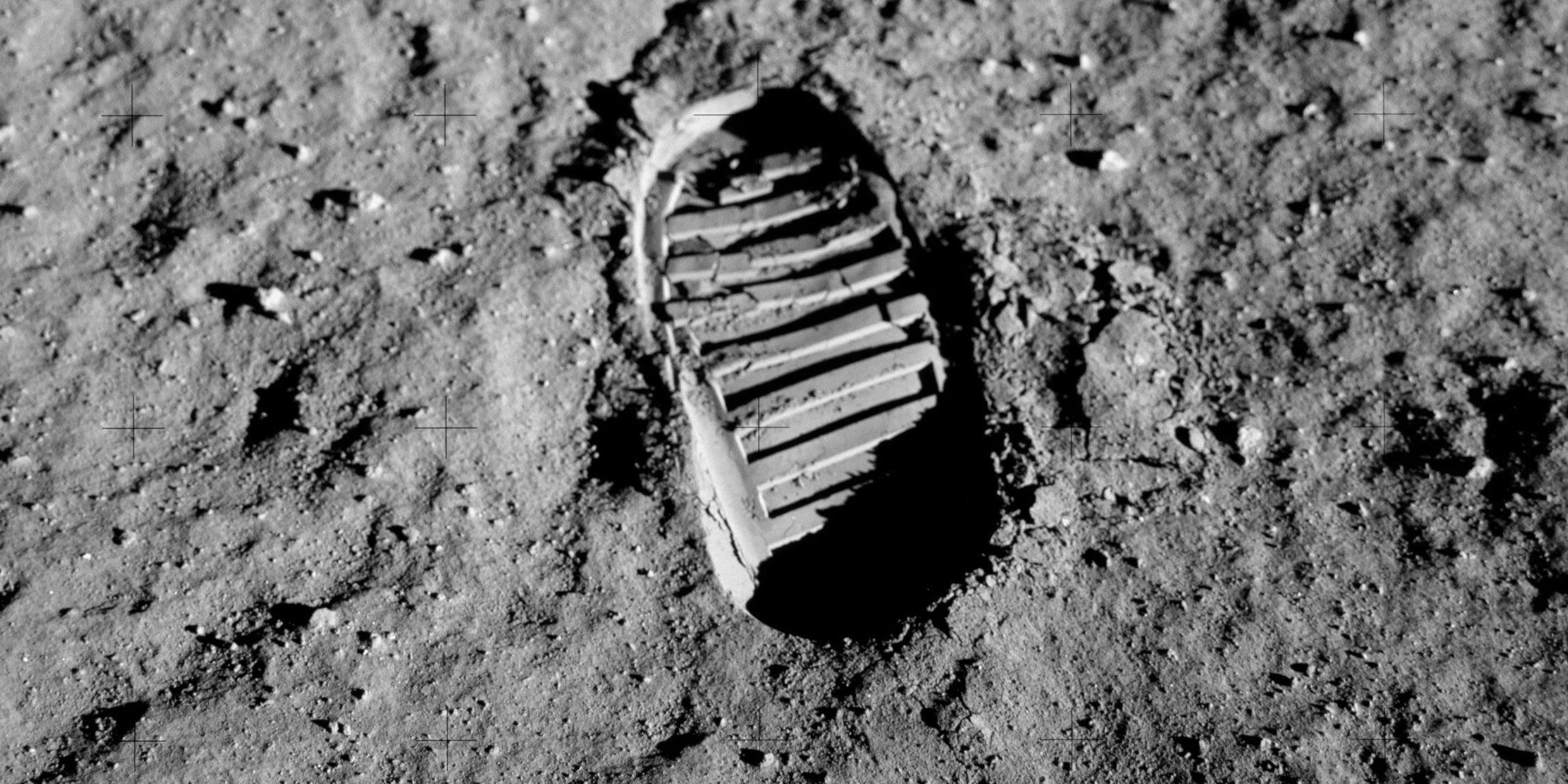Originally published 20 July 1987
Eighteen years ago [in 1969] the Apollo 11 spacecraft landed on the surface of the Moon, and for the first time a human stepped onto another world. That grand achievement was followed by five other manned lunar landings, the last of them in December 1972.
The Apollo program of lunar exploration was notable for its sureness of purpose, its high drama, and its stunning record of success. At six places on the surface of the Moon there are human footprints in the dust. No wind or rain will erase them, only a slow bombardment by micrometeorites. The footprints will endure for generations. Meanwhile, on Earth, the Apollo missions recede into history. Even now they seem like science fiction or part of a mythic past, a story of high adventure that may or may not have actually happened.
Today is also the anniversary of the landing of the first of two Viking craft on the surface of Mars. Viking 1 touched down on July 20, 1976. Viking 2 followed six weeks later. Aside from photographic reconnaissance, both craft focused on the emotive question of life on other worlds. It is generally agreed that the Viking experiments showed no evidence for life on the dusty red planet, not even microscopic life. If and when humans reach Mars they can reasonably expect to find themselves alone.
If and when. The American program of planetary exploration has fallen upon hard times. The two Voyagers launched in the 1970s continue to give us exciting views of the outer planets, but no new ventures have begun. We have retreated from the great frontier of lunar and planetary space. Our space efforts have become focused on near-space and are more immediately self-serving. Communications, multi-channel television, espionage, and space weaponry: These are repositories of our treasure and our vision.
Establishing a presence
America first reached for the moon with a Thor-Able rocket in late 1958. The mission failed. The next few years saw a string of failures, and a string of Soviet successes. At last, in 1962, Ranger 4 crashed onto the Moon and established, with that pile of twisted metal, an American presence on the lunar surface. Between 1962 and 1978, the United States launched 46 missions to the Moon and planets, more than half of which were successful. The last of these vehicles were two Pioneer-Venus probes launched in 1978. And since then — nothing.
Three planetary missions are in the planning stage—Magellan to Venus, Galileo to Jupiter, and Observer to Mars — but it will be at least 1989 before any of these missions leave the ground. The explosion of the shuttle Challenger has put much of the space program on temporary hold, but that tragedy is not the only source of delay. NASA’s research and development budget for planetary exploration has been drastically cut back, and the space agency seems bedeviled by complacency and confusion. In my view, all of this reflects a lapse of the national will with regard to the value of deep-space explorations.
David Morrison, a planetary astronomer at the University of Hawaii and Chairperson of NASA’s Solar System Exploration Committee, decried the hiatus in space exploration in a guest editorial in the June [1987] issue of Sky & Telescope magazine. He believes the American program of planetary exploration can face extinction unless we raise ourselves from our present lethargy and move forward.
His committee has made final recommendations to NASA about the directions planetary exploration should take. The most pressing objective is to get Magellan, Galileo, and Mars Observer on their way, even if it means launching with expendable rockets rather than the shuttle. The panel also recommends future voyages of discovery utilizing a new generation of more capable, less expensive spacecraft known as Mariner Mark II. They suggest a flight to Comet Tempel 2 in 1992 or 1993, followed by a mission to Saturn and Saturn’s moon Titan. A long range program in the committee’s view should focus on putting robot craft on the surface of Mars that can explore that planet and return Martian materials to Earth.
There will be more footprints
Morrison says: “By any reckoning the golden age of planetary exploration is behind us.” Maybe not. I prefer to think that the present lull in lunar and planetary exploration is coupled to the “get mine now” attitude that temporarily characterizes the American spirit. By contrast, the exploration of deep space is an activity that invests in the future, that counts knowledge as more important than money in the bank, that is willing to defer instant personal gratification for a grand collective adventure. Our self-centeredness will certainly pass; there will be more footprints on the Moon and in the dust of Mars.
Perhaps it is a cliche to say this, but I wonder if the 13 original American colonies would have had the vision to forge their constitutional bond if they had not had a common western frontier to attract their curiosity and attention. Since the dawning of the space age it has been the dream of internationalists that the collective exploration of space might ultimately distract the nations of Earth from intramural squabbling. To this end, Morrison’s committee hopes that our future efforts in planetary exploration will be achieved in cooperation with other spacefaring nations, including especially the Soviet Union.
In the decades since this essay was first published, robotic spacecraft have spearheaded humanity’s exploration of space with spectacular successes. The return of human exploration of space now seems on the horizon. ‑Ed.



